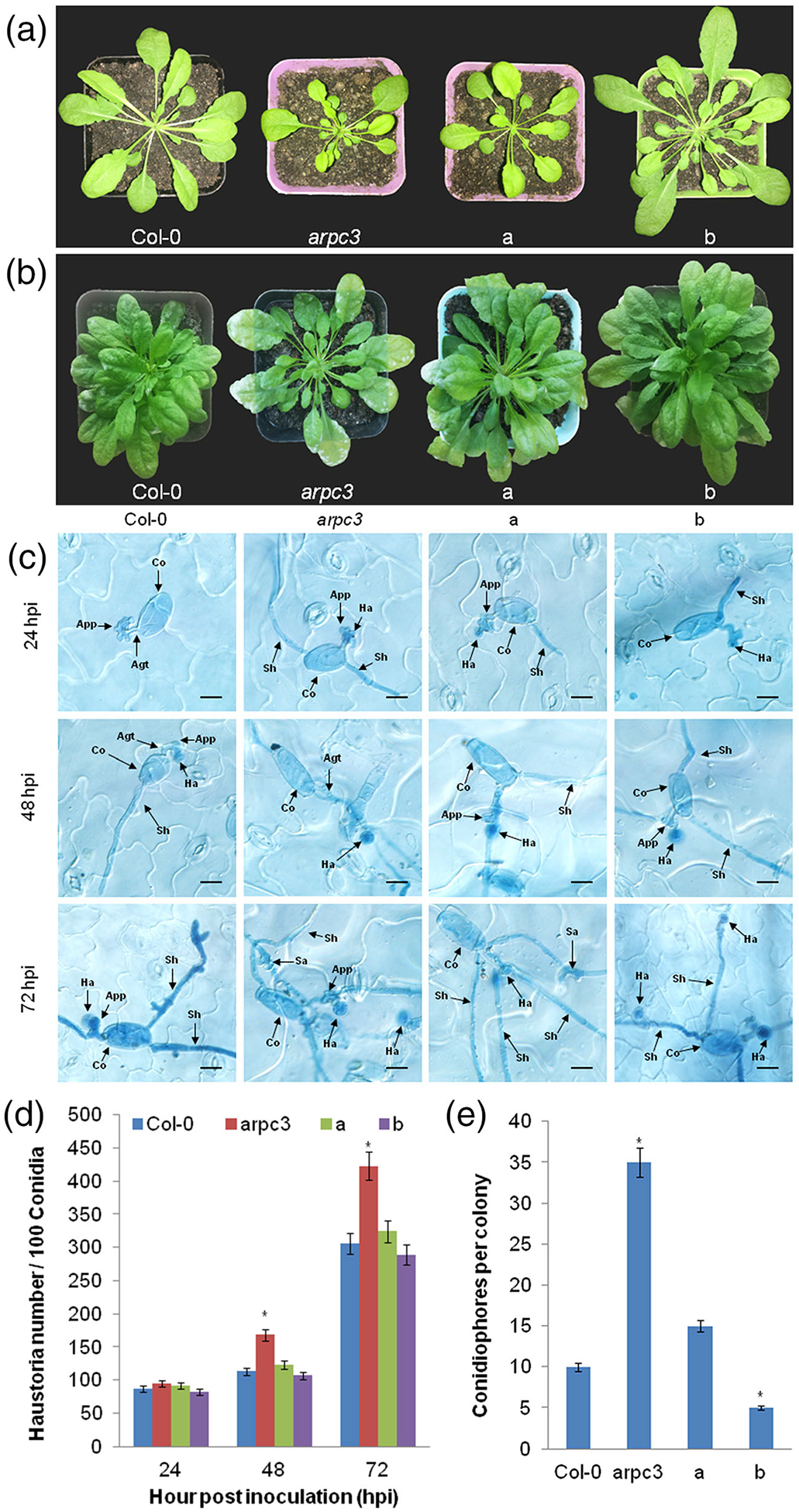FIGURE 7.

Complementation of ShARPC3 function confers On-Lz resistance in A. thaliana. (a) Macroscopic phenotypes of representative unchallenged plants at 8 weeks. (b) Infection phenotypes of WT Col-0 plants, arpc3 mutants, arpc3 plants transgenic plants expressing pCAMBIA3301-ShARPC3, and WT Col-0 transgenic plants expressing pCAMBIA3301-ShARPC3. Images were taken at 7 dpi. (c) Infection process of conidiation in WT Col-0 plants, arpc3 mutants, arpc3 plants transgenic plants expressing pCAMBIA3301-ShARPC3, and WT Col-0 transgenic plants expressing pCAMBIA3301-ShARPC3 by microscopy. Images were taken at 24, 48, and 72 hpi. (d) Quantitative assessment of haustoria/100 conidia on WT Col-0 plants, the arpc3 mutant, the arpc3 mutant expressing pCAMBIA3301-ShARPC3, and WT Col-0 plants expressing pCAMBIA3301-ShARPC3. Images were taken at 24, 48, and 72 hpi. (e) Quantitative assessment of conidiation on WT Col-0 plants, the arpc3 mutant, the arpc3 mutant expressing pCAMBIA3301-ShARPC3, and WT Col-0 plants expressing pCAMBIA3301-ShARPC3. Images were taken at 7 dpi. a: arpc3 plants transgenic expressing pCAMBIA3301-ShARPC3; b: WT Col-0 plants expressing pCAMBIA3301-ShARPC3. Error bars represent the variations among three independent replicates. Asterisks (*) indicate a significant difference between WT Col-0 plants, arpc3 mutants, arpc3 plants expressing pCAMBIA3301-ShARPC3, and WT Col-0 plants expressing pCAMBIA3301-ShARPC3 (P < .05)
